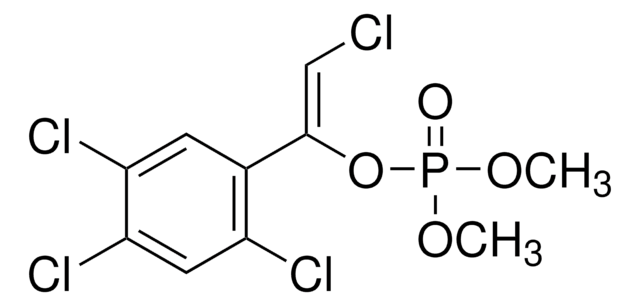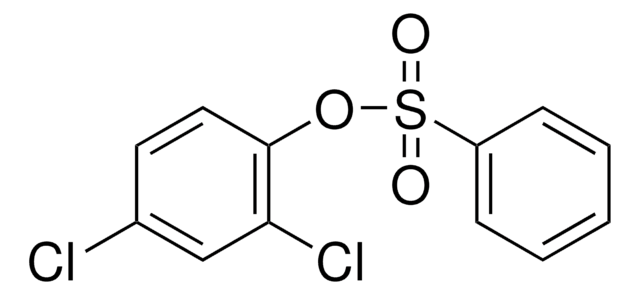35352
Dioxabenzofos
PESTANAL®, analytical standard
Synonim(y):
(RS)-2-Methoxy-4H-1,3,2δ5-benzodioxaphosphinine 2-sulfide, (RS)-2-Methoxy-4H-1,3,2δ5-benzodioxaphosphorine 2-sulfide, 2-Methoxy-4H-1,3,2-benzodioxaphosphorin 2-sulfide, Dioxabenzophos, Salithion
About This Item
Polecane produkty
klasa czystości
analytical standard
linia produktu
PESTANAL®
okres trwałości
limited shelf life, expiry date on the label
metody
HPLC: suitable
gas chromatography (GC): suitable
format
neat
temp. przechowywania
2-8°C
ciąg SMILES
COP1(=S)OCc2ccccc2O1
InChI
1S/C8H9O3PS/c1-9-12(13)10-6-7-4-2-3-5-8(7)11-12/h2-5H,6H2,1H3
Klucz InChI
OUNSASXJZHBGAI-UHFFFAOYSA-N
Zastosowanie
Polecane produkty
Informacje prawne
Hasło ostrzegawcze
Danger
Zwroty wskazujące rodzaj zagrożenia
Zwroty wskazujące środki ostrożności
Klasyfikacja zagrożeń
Acute Tox. 3 Oral - Acute Tox. 4 Dermal - Aquatic Chronic 2
Kod klasy składowania
6.1C - Combustible acute toxic Cat.3 / toxic compounds or compounds which causing chronic effects
Klasa zagrożenia wodnego (WGK)
WGK 3
Temperatura zapłonu (°F)
Not applicable
Temperatura zapłonu (°C)
Not applicable
Choose from one of the most recent versions:
Masz już ten produkt?
Dokumenty związane z niedawno zakupionymi produktami zostały zamieszczone w Bibliotece dokumentów.
Nasz zespół naukowców ma doświadczenie we wszystkich obszarach badań, w tym w naukach przyrodniczych, materiałoznawstwie, syntezie chemicznej, chromatografii, analityce i wielu innych dziedzinach.
Skontaktuj się z zespołem ds. pomocy technicznej










